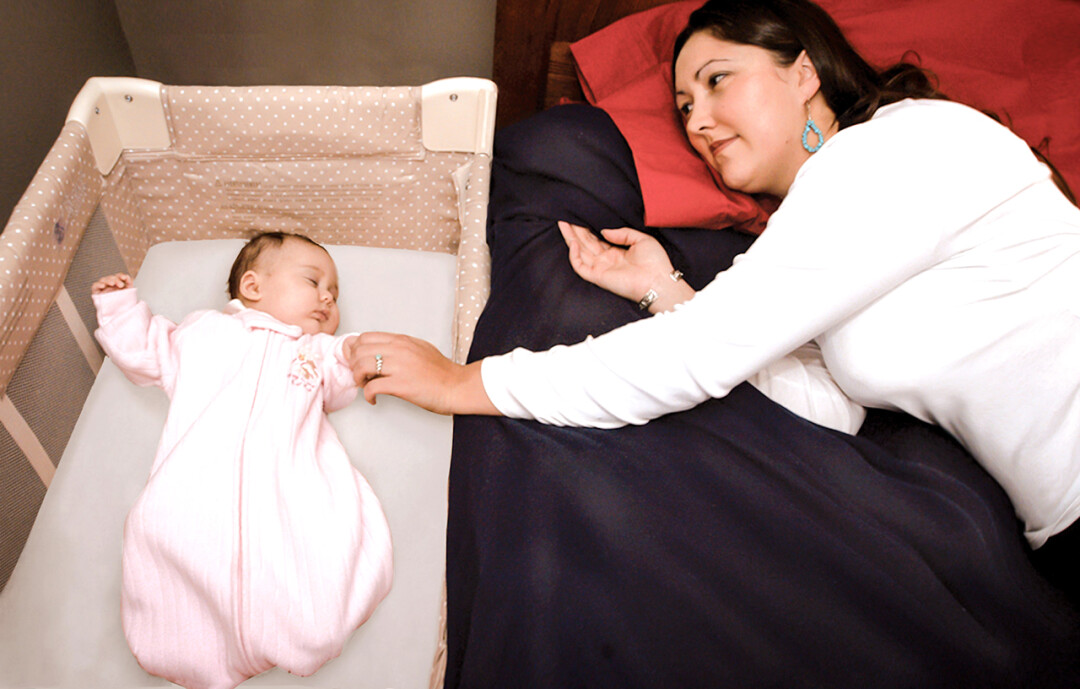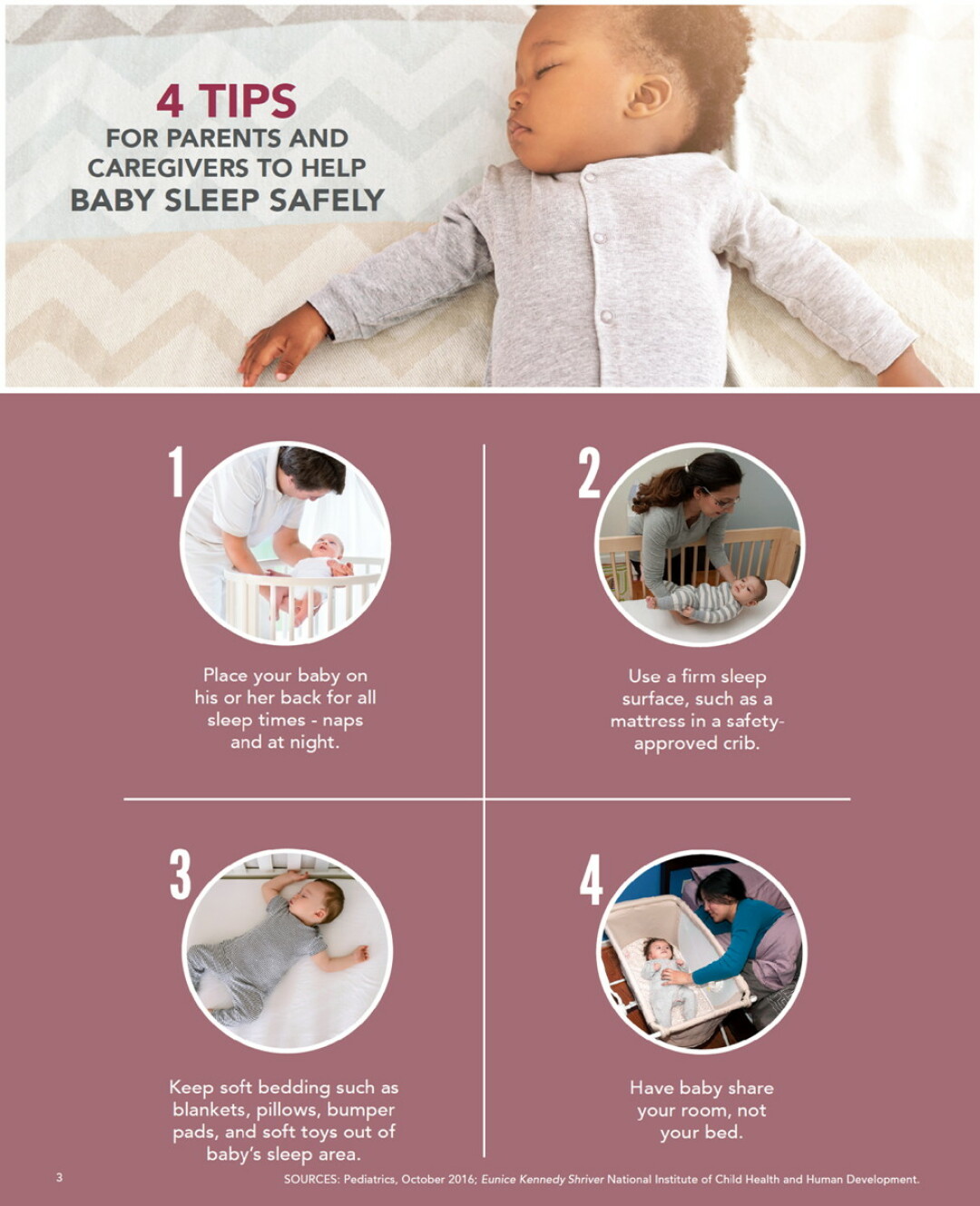Ensure Your Baby’s Sleep Environment Is Safe, Wherever You Are

Traveling with baby takes a lot of planning and supplies. Making a “safe sleep plan” is a part of prepping for a trip. Having a plan helps parents and caregivers know that your baby will sleep safely wherever they go. Babies love and need consistent sleep environments.
Here’s how to create your safe sleep plan:
1. Check if the hotel or house you’re visiting has a crib or portable play yard (i.e. Pack ’n Play).
If yes: Make sure it meets safety standards!
- This means: Less than two fingers should fit between side of crib and mattress.
- Slats close together (can’t fit a 12-ounce can between them).
- Not a drop-side crib. No missing, broken, or damaged parts.
- Not more than 10 years old.
- Has firm mattress.
If no: Bring a portable play yard. It’s easy to set up and provides a safe space for baby to sleep and play.
- Set it up away from windows, curtains, monitors, or cords.
2. Keep the sleeping area bare. No blankets, pillows, or toys.
3. Give your baby his or her own sleep space. It should be away from other kids, pets, and adults. Infants can get injured or have airway blocked if not sleeping alone.
4. Keep it cool. The best sleep temperature for babies is 68-72° F. Dress your baby in one more layer than you have on.
5. Don’t use the car seat as a sleeping area for baby when not in the car. Take your baby out of car seat when you arrive. Follow the ABCS. (And make sure everyone who will be watching your baby knows the ABCS too!)
- Alone: no other people or objects in baby’s sleep area.
- On Back: always put baby to sleep on back.
- In Crib: bassinet or portable – firm sleep surface with only fitted sheet.
- In Smoke-free air.
For more information, visit:
www.safetosleep.nichd.nih.gov/safesleepbasics/about
www.cpsc.gov/Safety-Education/Safety-Education-Centers/cribs/
Ellen Jacobs, MSN, RN, CLC, is a public health nurse with the Eau Claire City-County Health Department.



















